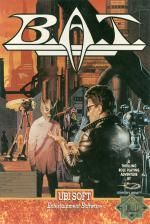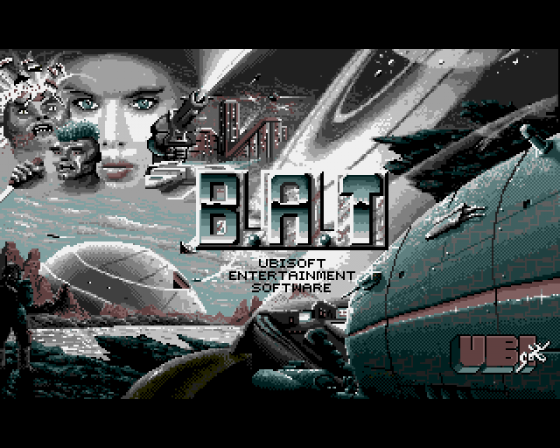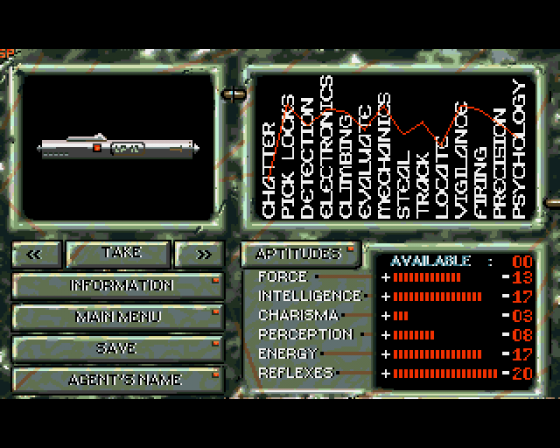BAT
BAT (The Bureau of Astral Troubleshooters) is an RPG from French software house, Ubi Soft. You play an agent of BAT, on the trail of the dastardly Vrangor and his accomplice, Josua Munewski. Vrangor, being a rather unpleasant psychopathic chappie, has threatened to blow the planet Selenia to Family Size pieces. You must, of course, grab a large gin and tonic... erm, no actually you must pursue and nab the little squirt.
Control is totally joystick-driven using icons and menus for command choices. Creating your character is the first task. Competentences (attributes) and skills form the meat of your character. The former include Perception which helps to develop your principle senses. Thus, you will be able to avoid surprise attack or being killed via poison with a high perception count.
Skills or aptitudes are many. Notable amongst the fourteen categories is Evaluate (this unusual skill will give you the ability to study and determine the real nature of many situations that may otherwise fool you), Vigilance (on your guard) and Psychology (knowing how to approach and contact individuals). All of these, and more, characteristics are novel and admirable. However, I am convinced that their inclusion is nothing more than a gimmick. I'd like to know just how Ubisoft have been able to quantify the likes of 'Vigilance' and 'Evaluate' and how each rating affects the actual game.

I fear that these categories are rather too subtle and advanced to be noticed in the rather simple game design that BAT has. Especially as the game does not include a full interaction system, only a few staid menu choice questions.
The method of movement and interaction is via the joystick pointer which changes its shape when over specific areas of the screen. Placing the pointer over a character may bring up a speech bubble, for example. An exit (to another graphic screen) turns it into an arrow and so on. Clicking on these 'action' areas may bring up an additional menu. For example, you will need to eat and drink regularly. Selecting 'health' from a menu pops up a daughter menu with the eat and drink options. A tertiary menu suggests the item to be eaten/drunk. Menu and icon design is pretty logical and easily learnt.
Speaking of eating/drinking. There is far too much of it! Every ruddy five seconds your character complains "I'm hungry/thirsty". You'll find yourself constantly interrupting play to run down the menus to select food or drink. This becomes a complete pain. Especially as you can only carry so much food and drink, so you'll need to ferry the stuff to and fro to survive. This one factor accounted for the majority of my game deaths as I starved or died of thirst. Frankly, the designers should have made this area less important or, better still, redundant.

Speaking about gripes I became confused, all too often, as to which arrow moved me to what area. I often found myself moving to the wrong area, moving back to the original screen and selecting the correct direction. A bore on the C64 as the graphic screens take time to load from disk.
Then there is the programming section that allows you to create mini-Basic-like programs. It is full of commands (IF, WARN, RESTART), parameters (ROBOT, HUNGRY, NORMAL) and messages. Presumably included to speed up the gameplay, I think. Actually, I wasn't quite sure as the manual was pretty poor explaining as to why I needed this feature, what benefits it would bring, where I should use it and how I should use it (the included explanation was too short). Examples were too few and far between, too.
On the positive side, graphics are well presented and the background music is pretty good. Spot effects are minimal, though. Overall, I found BAT a good example of French software. Full of promise, good graphics and sound but suffering from poor interface and game design.


 1st December 1990
1st December 1990






